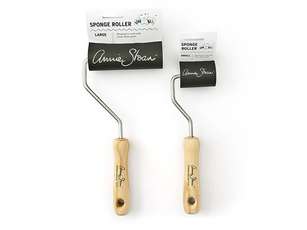How To Breed Sponge
Have you ever wondered how to breed sponge? Sponge breeding can be a challenging process, but the rewards of successful breeding are well worth the effort. In this article, we will discuss the best techniques for breeding sponge and how to overcome any obstacles you may encounter along the way.
The Pain Points of Breeding Sponge
Breeding sponge can be difficult for many reasons, such as finding the right environment, identifying the ideal sponge species, and overcoming potential diseases. Additionally, sponge breeding requires a lot of patience and attention to detail. However, with the right knowledge and approach, sponge breeding can be an exciting and rewarding experience.
The Target of Breeding Sponge
The target of breeding sponge is to create new sponge colonies that are genetically diverse and robust. To achieve this goal, it's important to start with healthy sponge specimens and maintain optimal environmental conditions that promote healthy growth. Regular monitoring and care are necessary to ensure that the sponge colony is thriving.
Summary of Breeding Sponge Techniques
To summarize, breeding sponge can be challenging but rewarding. Follow these steps to increase your chances of success:
- Select a healthy sponge specimen with desirable qualities
- Create optimal environmental conditions for sponge growth
- Monitor sponge growth and protect against potential diseases
- Carefully maintain sponge colonies and breed new ones through fragmentation
How to Breed Sponge: Personal Experience and Techniques
When I first started breeding sponge, I struggled to find the right environment and keep the sponge colonies healthy. However, after much trial and error, I discovered the following techniques:
- Select sponge specimens with different color and texture
- Provide adequate water circulation and ensure proper lighting
- Regularly remove debris and other organisms from the sponge colonies
- Break off a small sponge fragment and move it to a new location where it can grow into a new colony
By following these techniques, I was able to successfully breed several new sponge colonies and improve the genetic diversity of my existing sponge specimens.

Maintaining Sponge Colonies: Personal Experience and Tips
Maintaining sponge colonies can be challenging, but it's important to follow certain steps to ensure their survival. From my personal experience, here are some tips:
- Keep the sponge colonies away from other potentially harmful organisms
- Regularly monitor the sponge colony for signs of disease or distress
- Provide adequate food and nutrients to promote healthy growth
- Use a sponge-specific cleaner to remove algae and debris from the colony
By following these tips, you can ensure that your sponge colony remains healthy and viable for breeding.

Choosing the Right Sponge Species
When breeding sponge, it's important to choose the right sponge species for optimal results. Some of the best species for breeding include the Cushion Coral Sponge, the Yellow Tube Sponge, and the Orange Elephant Ear Sponge. These species are known for their hardiness, fast growth, and their ability to survive in different environments.
Cleaning and Sterilizing Sponge Equipment
When working with sponge colonies, it's important to keep your equipment clean and sterile to prevent the transmission of disease. To sterilize your equipment, rinse it in hot water and use a sponge-specific cleaner. Additionally, avoid using any chemicals or cleaning products that could harm the sponge colonies.

Question and Answer About Sponge Breeding
Q: Can sponge breeding be done in a home aquarium?
A: Yes, sponge breeding can be done in a home aquarium with the right environment and care.
Q: How long does it take to breed sponge?
A: Sponge breeding can take several months to a few years, depending on the species and environmental conditions.
Q: Do I need any special equipment to breed sponge?
A: While you don't necessarily need any special equipment, it's important to have an aquarium with proper filtration, lighting, and circulation for optimal sponge growth.
Q: How can I promote genetic diversity in my sponge colonies?
A: To promote genetic diversity, select sponge specimens with different color and texture, monitor for signs of disease and distress, and breed new colonies through fragmentation.
Conclusion
To successfully breed sponge, it's important to follow certain steps and techniques, such as selecting a healthy sponge specimen, creating optimal environmental conditions, and carefully maintaining sponge colonies. By using these methods and maintaining patience, you can increase your chances of breeding robust and genetically diverse sponge colonies.
Gallery
Shorelines » Blog Archive » Blue Crabs Need (More Than) A Few Good Men
Photo Credit by: bing.com / blue crabs crab mating sponge eggs few men good millions dense mass left right two made than need serc sercblog
How To Breed Spunge And Rare Spunge In My Singing Monsters - YouTube

Photo Credit by: bing.com / spunge singing
Annie Sloan Sponge Roller 5 Cm Breed

Photo Credit by: bing.com /
Free Images : Weimaraner, Vertebrate, Labrador Retriever, Dog Breed

Photo Credit by: bing.com / mammal vertebrate pointing snout pxhere carnivoran
My Singing Monsters Breeding Chart

Photo Credit by: bing.com /